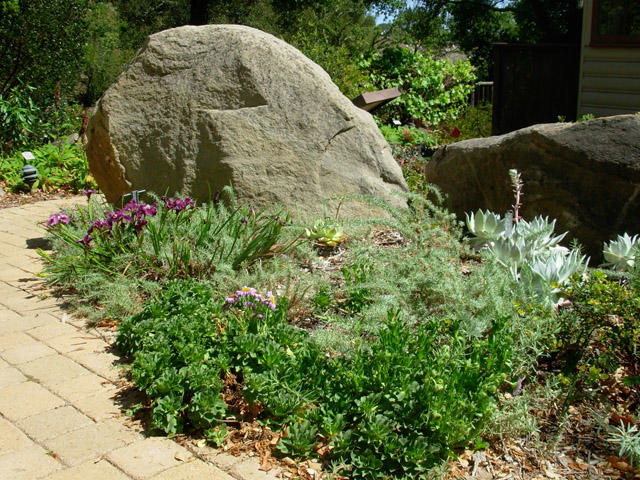
The best drought resources for Western gardens

The wildflowers and redwoods at the Santa Barbara Botanic Garden are nice, but when I visited last summer I was particularly impressed by the Home Demonstration Garden, which showcases water-conserving plants and is a natural outgrowth of the garden’s focus on California native plants.
More recently, as I pulled together an online guide to our 15 favorite Western botanic gardens, I discovered that SBBG is not alone—many public gardens are literally and figuratively models for water conservation.
With our online content, monthly magazine, and renowned garden books, Sunset remains a reliable first stop for landscaping and plant-selection help. But when you feel a need to get out and smell the roses, a public garden (whether it made our slide show or not) can be a tremendous source for ideas and inspiration. It can also be a great place to purchase drought-resistant plants.
The popular Denver Botanic Gardens, the most-visited public garden in the country last year, created the Roads Water-Smart Garden to highlight plants that do well in semi-arid climates. At the UC Davis Arboretum and Public Garden, staff horticulturalists have identified 100 tough, reliable, low-water plants as UC Davis Arboretum All-Stars. Visitors can ID them by the brightly colored signs that include a photo of the plant in bloom and information about how to grow it. The Los Angeles County Arboretum and Botanic Garden has a Water Conservation Garden that aims to show visitors how they can be responsible stewards of a dwindling water supply and still have beautiful landscaping.
Though native plants and water conservation are white-hot topics these days, both Sunset and the region’s best botanic gardens have been immersed in these subjects for decades. In the late 1950s and early 1960s, Sunset teamed with the L.A. County Arboretum and Botanic Gardens, the Arizona-Sonoma Desert Museum, and San Francisco’s Strybing Arboretum (now S.F. Botanical Garden) to create demonstration gardens that highlighted how to use native plants.
It was a good idea then; it’s absolutely crucial today.


